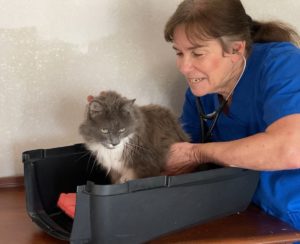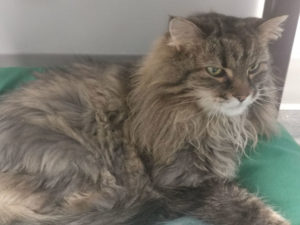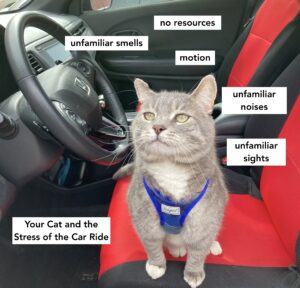 Cats tend to be homebodies – your cat’s ideal day may include eating breakfast, then finding a sunny window to nap in. Midday is time for a stretch and a snack; if the weather is nice, he may want to spend some time in his catio. Unlike dogs, few cats become ecstatic at the prospect of a car ride, hanging their heads out of the window.
Cats tend to be homebodies – your cat’s ideal day may include eating breakfast, then finding a sunny window to nap in. Midday is time for a stretch and a snack; if the weather is nice, he may want to spend some time in his catio. Unlike dogs, few cats become ecstatic at the prospect of a car ride, hanging their heads out of the window.
Once your cat accepts his carrier, the next step to getting him to the vet is the car ride. The car ride introduces additional stressors for your cat to experience. Here are some tips to help your cat cope with the stress of the car ride.
Help your cat cope with the stress of the car ride
Unfamiliar Smells and Scents
Include your cat’s familiar bedding in her carrier to offset the unfamiliar smells of the car with the reassurance of her own, individual scent. Spraying the carrier with feline facial pheromones (Feliway Classic, Comfort Zone Calming) also sends a message of security and territory to the traveling cat. Make sure to spray the carrier 15-20 minutes before your cat enters it so that the alcohol in the spray dissipates.
Lack of Resources
Delays due to accidents or road construction are part of car travel. Make sure to provide your cat some resources on the way. A non-slip absorbent pad for accidents is part of a well-equipped carrier. On long car rides, you may want to consider putting some ice cubes in a bowl that will gradually melt, provide water to drink and less mess in case of spills.
Motion
Some pets may be prone to motion sickness – this may be in part due to anxiety. Carrier/travel training can alleviate some of this. Travel medications for anxiety and nausea will be addressed in a later post in this series.
Unfamiliar Noises
Horns honking, engine noise, and sounds of passing vehicles are part of the car travel experience. Try offsetting these unfamiliar noises with some cat-specific music (https://www.musicforcats.com/).
Researchers at the University of Wisconsin composed music that would calm cats. In 2019, this cat music was tested in the veterinary clinic at Louisiana State University. Stress and handling scores were lower for cats exposed to the “cat music” than the scores of cats exposed to silence or classical music. (see Cat Music:Just for Cats).
Unfamiliar Sights
Flashing lights and large vehicles going by your car can startle and frighten your cat. Consider covering your cat’s carrier to shield him from unfamiliar sights.
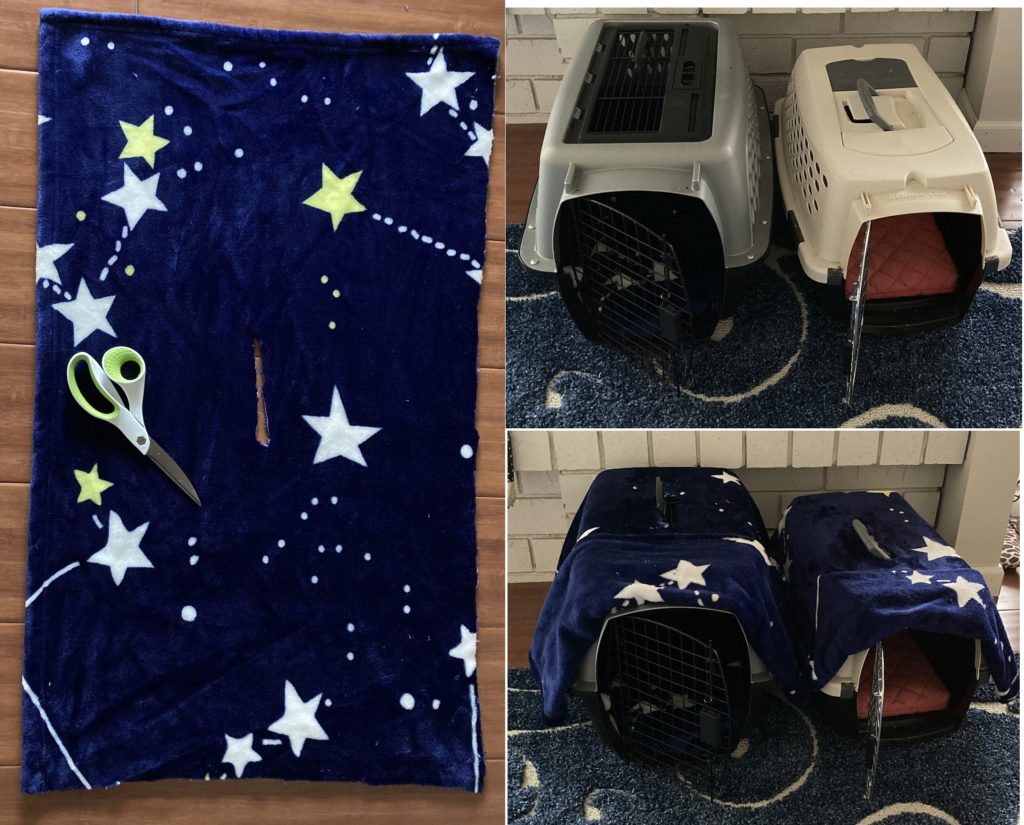
Help your cat cope with the stress of the car ride: Practice rides
Of course, there is nothing like actually having some positive travel experience. When teenagers first get their drivers’ permit, there is some anxiety and excitement on those first few drives that goes away as they gain experience driving.
Some short “practice drives” with positive reinforcement can help your cat cope with the stress of the car ride. If your cat is clicker-trained, the clicker can be used to trigger some positive emotions – your cat associates the sound of the click with something good such as treats.
First, let’s get your cat used to the car.
- Have your cat enter his carrier. Click and treat.
- Carry the carrier to the car and put it inside.
- After a few minutes, take the carrier back into the house and let kitty out. Click and treat.
Once your cat is comfortable sitting in his carrier in the car, get ready to do some driving.
- Have your cat enter his carrier. Click and treat.
- Carry the carrier to the car and put it inside.
- Start the engine and let the car idle for a few minutes. Play music if you plan to use it.
- Go for a drive around the block.
- Return home and turn car off.
- Take the carrier back into the house and let kitty out. Click and treat.
Your cat now has some travel experience under his belt. Car travel should now be a little less scary. Every so often, take kitty for a spin around the block or to a park nearby if he will ride in a backpack or stroller. Try to allow him some positive experiences where the car drive does not end up at the vet. (For information about your cat’s safety and carrier placement in the car, visit https://www.centerforpetsafety.org/).
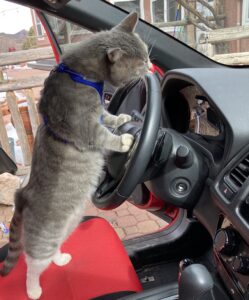

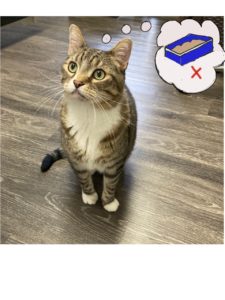
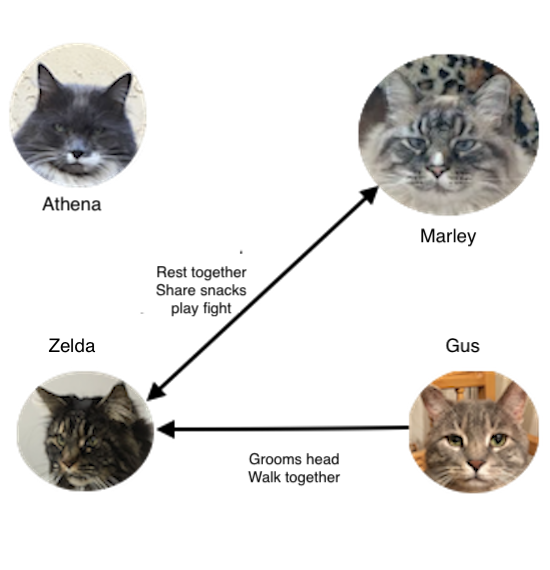
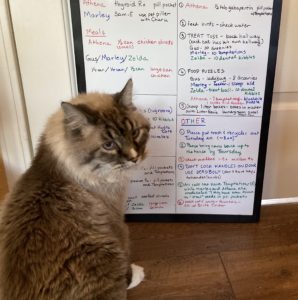
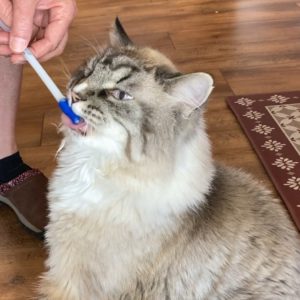 Mix up the routine from time to time – change is part of living. For example, in the medicating routine, you may wish to introduce and practice other ways of offering a pill to your cat – say with a pet piller or offering a “dummy pill” in a squeeze up treat.
Mix up the routine from time to time – change is part of living. For example, in the medicating routine, you may wish to introduce and practice other ways of offering a pill to your cat – say with a pet piller or offering a “dummy pill” in a squeeze up treat.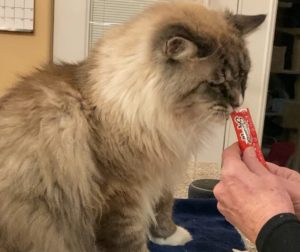


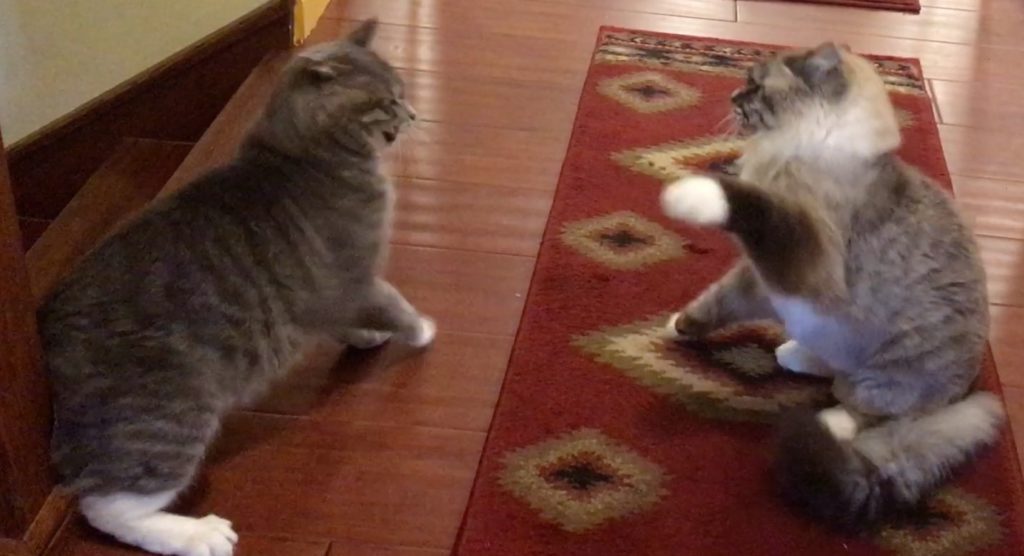 You are sitting by the window, engrossed in your latest murder mystery. You don’t notice that neighborhood tabby outside your window but your cat does and goes into full battle mode, hissing and striking at the window. You look up and jump, as your cat turns and strikes out at you. She looks like a miniature saber tooth tiger! Alarmed, you throw your glass of water at her as you beat a hasty retreat.
You are sitting by the window, engrossed in your latest murder mystery. You don’t notice that neighborhood tabby outside your window but your cat does and goes into full battle mode, hissing and striking at the window. You look up and jump, as your cat turns and strikes out at you. She looks like a miniature saber tooth tiger! Alarmed, you throw your glass of water at her as you beat a hasty retreat.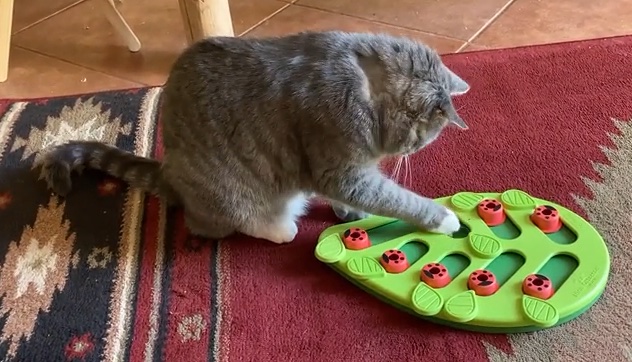 Why slide a block aside to uncover food when there is food freely available in a bowl nearby? Psychologists call the behavior “
Why slide a block aside to uncover food when there is food freely available in a bowl nearby? Psychologists call the behavior “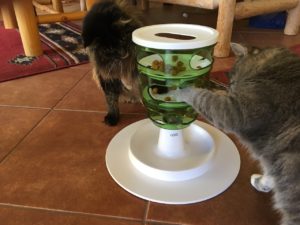
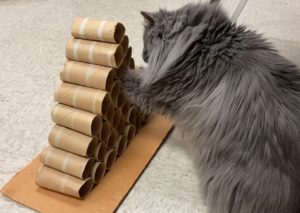
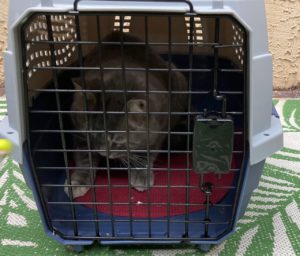 Many of us (cat owners) dread taking our cat to the vet. There is the ordeal of the carrier and car trip; once there, your cat seems miserable. However, regular veterinary care is the key to a happy and longer life for your cat. Can medication before your cat’s vet visit help?
Many of us (cat owners) dread taking our cat to the vet. There is the ordeal of the carrier and car trip; once there, your cat seems miserable. However, regular veterinary care is the key to a happy and longer life for your cat. Can medication before your cat’s vet visit help?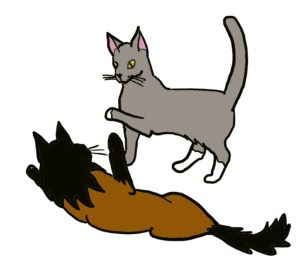


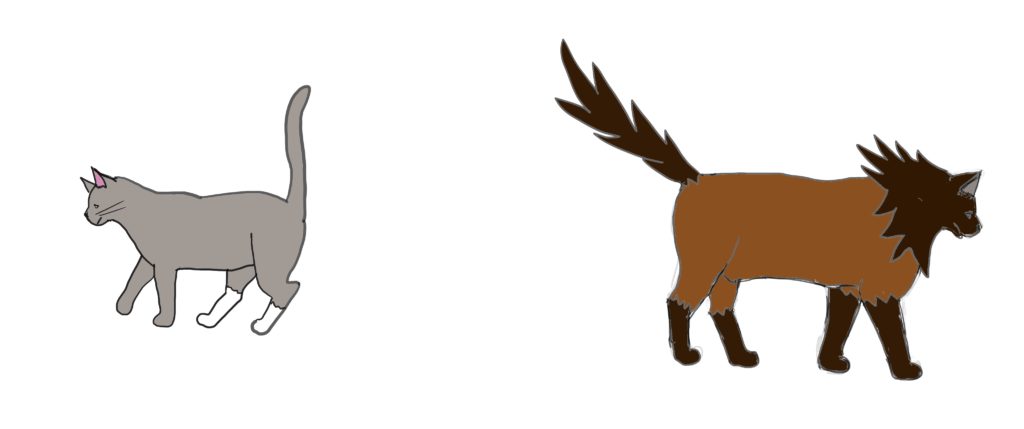 Play usually ends with one cat standing facing the other cat, who may be on his/her side, or there is a chase sequence that just dies off, with the cats walking away from each other.
Play usually ends with one cat standing facing the other cat, who may be on his/her side, or there is a chase sequence that just dies off, with the cats walking away from each other.